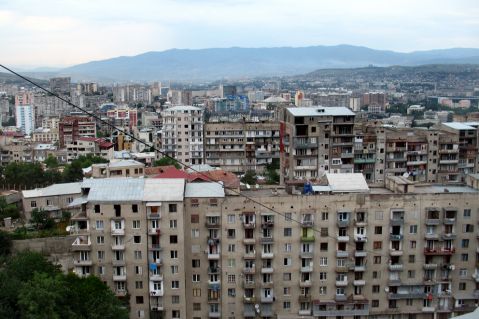16/08/09
So there are two Akhalkalakis… we decided to travel into Georgia by marshrutka from Gyumri to Akhalkalki, having checked that it was possible with the Armenian tourist office. It was only a couple of hours from Gyumri and not very expensive.
We crossed the border and got out of the Marshrutka at what was apparently the centre of town. Immediately we were descended upon by 4 or 5 taxi drivers, all wanting to know where we were going.
We call our contact at Garikula.
Martin: Hi Rezo, we’ve arrived.
Rezo: Great, are you in Garikula yet?
Martin: Not yet, we’re in Akhalkalaki. How do we get to you?
Rezo: Just take a taxi. It’s not far.
We ask the taxi drivers about Garikula. None of them have heard of it.
Back on the phone.
Martin: They don’t know where it is.
Rezo: Are you sure you’re in the right Akhalkalaki?
We relate this to the taxi drivers and they confirm that yes, there is another Akhalkalaki and that Garikula is probably close to that one. If we go to Akhaltsikhe we can catch an overnight train to Tbilisi and get off at 5am in Kaspi which is close to the other Akhalkalaki.
90 hair-raising minutes later, we arrive in Akhaltsikhe and head to the train station. Except it has no windows and the door is chained. A man selling watermelons tells us that this is ok. A couple of hours later the train arrives.
There’s only one carriage but the tickets are cheap. The only thing is the onboard policeman explains we can only have mattresses if we have a drink with him first…
Kaspi, at 5am, is cold. And it’s raining. We take a taxi to Akhalkalaki.
By 6.30am and the sun is up. We ask a man who is out on his veranda for directions. He knows where the house is but says it’s too early and we should come in out of the rain to keep warm. He gives us each a peach, a glass of wine and a large glass chacha. His two nephews and their friends are staying with him and one by one they appear. He explains that they’re having a barbecue and that we should join them. The fire’s already lit and it’s still raining…
He offers us a lift and we arrive at Art Villa Garikula at 11am. Just in time for breakfast.

























